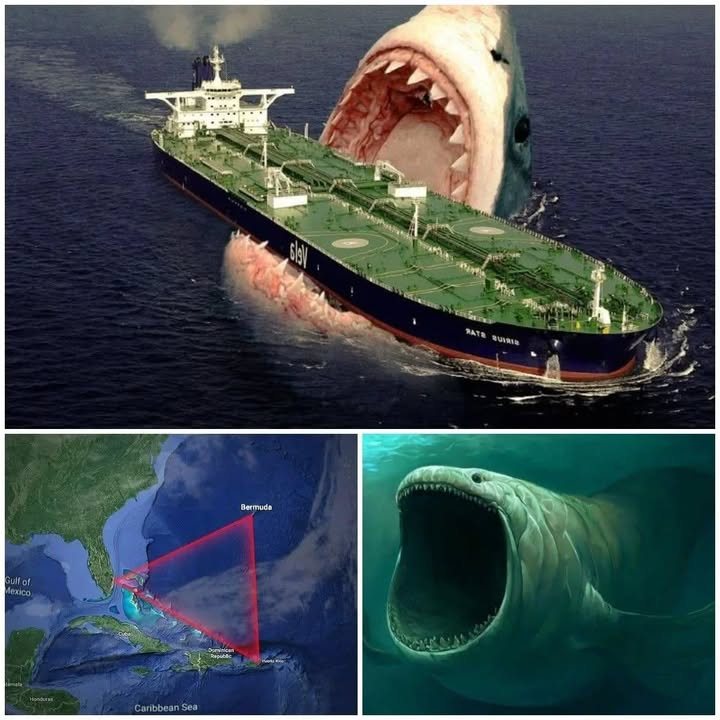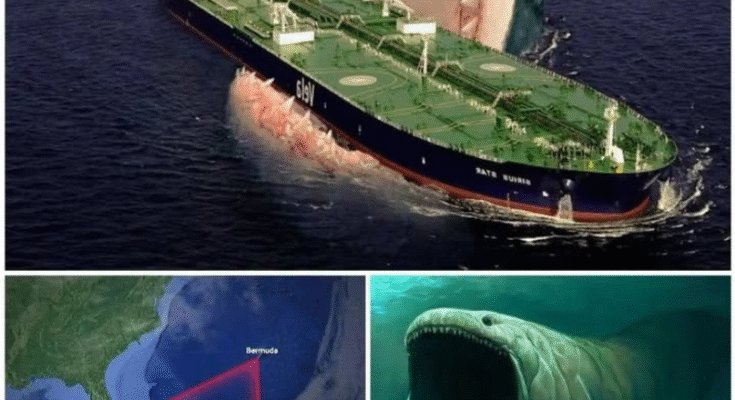A shocking and terrifying report has emerged from the Bermuda Triangle: the legendary Megalodon, long believed extinct, has allegedly resurfaced and attacked an army warship. This colossal prehistoric shark, once dominating oceans millions of years ago, now appears to pose a threat to modern maritime activity, reigniting fascination and fear surrounding the mysterious waters of the Triangle.
The Incident

Eyewitnesses aboard nearby vessels reported a sudden, massive disturbance in the water, followed by the destruction of a military warship. Descriptions suggest a predator of unimaginable size and strength, reminiscent of the prehistoric Megalodon, blending ancient terror with modern reality. Radar readings reportedly detected a massive moving object beneath the waves, further corroborating witness accounts, though official confirmation remains pending.
The attack has caused widespread alarm among naval authorities, maritime experts, and the general public. Questions arise not only about the survival of a species thought extinct for over 2 million years but also about the ecological feasibility of such a creature existing undetected in contemporary oceans.
Scientific and Naval Perspectives
Marine biologists and oceanographers emphasize the extreme improbability of a Megalodon surviving to the present day. They point to evolutionary evidence, food chain requirements, and fossil records, which suggest that such a species could not sustain a population in modern oceans. However, the Bermuda Triangle’s unique depth, currents, and relative isolation fuel speculation about undiscovered marine habitats where colossal predators might survive.

Naval experts are scrambling to assess the implications for maritime safety. The reported attack underscores potential threats to ships navigating this enigmatic region, prompting immediate precautionary measures and increased monitoring of the area. Military and scientific teams are collaborating to investigate sonar data, water disturbances, and eyewitness accounts to determine the validity and scope of the incident.
Cultural and Mythical Resonance
The Bermuda Triangle has long been associated with mysterious disappearances, unexplained phenomena, and tales of supernatural or cryptid activity. The possible resurgence of the Megalodon adds a new dimension to these legends, merging prehistoric fear with contemporary maritime mystery. This convergence of myth, history, and modern observation captivates both scientists and the public, reminding us of the ocean’s enduring ability to surprise and terrify.
Implications for Humanity
If the Megalodon is indeed responsible for the attack, it would fundamentally alter our understanding of oceanic life and predator dynamics. Such a discovery would force reevaluation of ecological assumptions, marine conservation strategies, and our perception of prehistoric species’ resilience. Even if the reports are ultimately unconfirmed, the incident highlights the unknown dangers lurking beneath the ocean’s surface, reinforcing the need for careful monitoring and research in remote and deep-water regions.
Conclusion
The alleged Megalodon attack in the Bermuda Triangle is a chilling reminder of the ocean’s mysteries and the potential for ancient predators to defy expectations. Whether real or mythologized, the event sparks urgent questions about survival, ecology, and the unseen dangers beneath the waves. As scientists, naval authorities, and global observers investigate, the story of the Megalodon challenges our understanding of both history and the deep-sea world, leaving humanity to confront the possibility that the ocean still harbors titanic threats, unseen and unstoppable.



